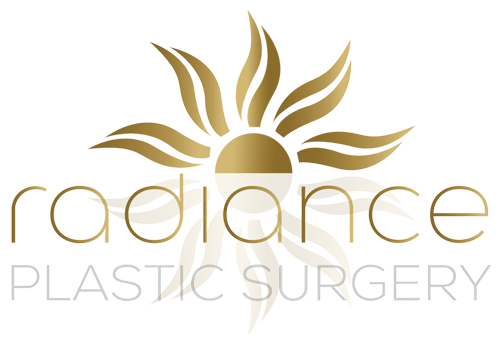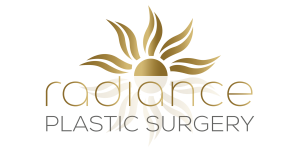After undergoing breast augmentation, one of the common concerns you might have is when you can resume normal activities, such as driving. The timeline for getting back behind the wheel is not universal, as it largely depends on the specifics of your surgery and individual recovery rate. However, most patients want to return to their daily routines as quickly and safely as possible.
You can resume normal activities, such as driving, by the end of two weeks. Most individuals take four weeks off from work to allow for recovery. If you do office work, you may be able to return as early as 2 weeks. Let your discomfort be your guide. Getting back to significant aerobic or physical activity will take four weeks.
This precaution is necessary because you need to have complete control of your vehicle without being hindered by discomfort or the effects of any residual pain medications. You must not risk straining your incisions or impairing your reaction time on the road. Understanding the factors contributing to your recovery can help gauge when you might be ready to drive again.
Each person’s recovery is unique, influenced by their health, the nature of the breast augmentation procedure performed, and their body’s ability to heal. Postoperative instructions from your healthcare provider will give you a personalized timeline and indicate when engaging in activities such as driving is advisable. Adhering to these guidelines is crucial for a safe and effective return to your everyday life, including driving.
Understanding Breast Augmentation and Recovery
When considering breast augmentation, it is essential to understand not only the surgical process but also the recovery period, as this affects when you can resume normal activities like driving.
The Basics of Breast Augmentation
Breast augmentation is a plastic surgery procedure involving the placement of implants to enhance the size and shape of your breasts. During the procedure, a plastic surgeon makes incisions in discrete locations, typically under the breast, around the areola, or under the arm, through which breast implants are inserted. The choice of incision type, implant material, and size is determined in consultation with your surgeon, considering your body type and desired outcome.
Typical Recovery Timeline
After your surgery, the recovery timeline is critical. You’ll be under anesthesia during the procedure and will need someone to drive you home afterwards. Recovery varies, but here are general guidelines:
- Day 1-3: Rest is crucial. Strictly limit activities and follow your surgeon’s advice to manage swelling and discomfort.
- Day 4-7: You may begin to increase light activities gradually. Vigorous movements should still be avoided.
- Week 2: Depending on your job, you might return to work if it’s not physically demanding.
- Week 3-4: Reviews by researchers suggest a gradual resumption of everyday activities, including gently driving.
It is essential to consult with your surgeon to get personalized advice on when it is safe to drive, as individual recovery rates can vary. Your surgeon’s experience and the specifics of your breast surgery will determine the most appropriate timeline for you.
Postoperative Care and Concerns
Following breast augmentation, your approach to recovery is pivotal for your well-being and the outcome of the surgery. Familiarizing yourself with the proper postoperative care can drastically influence the speed and comfort of your recovery.
Immediate Post-Surgery Care
Immediately after surgery, it’s essential to have someone drive you home, as operating a vehicle is not safe. According to professional guidelines, you should not drive or operate heavy machinery for at least 24 hours post-operation, and certainly not while taking pain medication.
- Transportation: Arrange for someone to assist you with transportation post-surgery.
- Rest: Ensure you have a comfortable space prepared to rest and recover.
Managing Pain and Discomfort
Pain and discomfort are common after breast augmentation. You will likely be prescribed pain medication, which should be taken as directed.
- Medications: Follow the prescribed pain management regime.
- Home Care: Rest, ice packs, and limited movement can help alleviate pain.
Monitoring for Complications
Recognizing signs of complications early can prevent them from worsening. Contact your surgeon if you experience increased swelling or redness or suspect infection. Be mindful of symptoms like severe pain or signs of blood clots.
- Typical Symptoms: Swelling, some bruising, and discomfort are typical.
- Warning Signs: Severe redness, discharge, fever, or abnormal swelling may indicate an infection or other complications.
Gradual Resumption of Activities
After breast augmentation, it is crucial to understand the timeline and guidance for gradually resuming daily activities and exercise to ensure proper healing and avoid complications.
Returning to Work and Daily Tasks
You can typically return to work and daily tasks within a week, provided your job does not involve heavy lifting or strenuous activity. Avoid movements that might strain your chest muscles, like reaching high shelves or carrying heavy shopping bags. Driving should be paused until you are off prescription pain medication and you feel confident handling the car comfortably, which often means waiting at least until you can perform an emergency stop without hesitation. This generally equates to about 3–4 weeks post-surgery.
During recovery, ensure adequate rest and avoid compromising your sleep quality. When resting, keep your upper body elevated to reduce swelling. While light movement is beneficial for circulation, it’s crucial to balance this with appropriate rest.
Incorporating Exercise and Lifting
Reintroducing exercise should be done cautiously and under your surgeon’s advice as part of your recovery process. Start with light walking to maintain circulation. After a few weeks, you may gradually incorporate light activities like using a stationary bike or gentle stretching. Avoid heavy lifting, high-impact exercises, and swimming until you have received clearance from your healthcare provider, usually around the 6-week mark.
Once you begin exercising, wear a supportive bra to protect the surgical site and reduce discomfort. Avoid strenuous exercises, such as push-ups, which can strain the chest muscles and impact the healing of scars. Postoperative massage may be advised to promote softening of scar tissue, but only begin this once your surgeon approves. Sun exposure should be minimized to prevent darkening of the scar tissue.
Remember, each person’s recovery timeline can vary, and it’s essential to listen to your body and follow your surgeon’s personalized advice.
Maintaining Long-Term Health
After breast augmentation, focusing on long-term health is crucial for maintaining your results and ensuring a smooth recovery. Proper care can prevent complications and optimize the longevity of the augmentation.
Healthy Lifestyle Considerations
Diet: It’s essential to nurture your body with a healthy diet high in fruits, vegetables, lean proteins, and whole grains. Adequate nutrition supports healing and can help maintain the results of your surgery.
Alcohol & Drugs: After your procedure, it’s advisable to limit alcohol consumption and avoid drugs that can interfere with recovery. Alcohol can increase the risk of swelling and negatively impact the healing process, while certain drugs might interact with prescribed medications.
Exercise: Once your surgeon clears you, regular physical activity is critical. However, avoiding strenuous exercise would help until your doctor advises that it is safe to prevent any strain on the healing tissue.
Breastfeeding: If you plan on breastfeeding in the future, discuss this with your surgeon before the procedure. Most breast augmentations allow for breastfeeding, but it’s a critical consideration for your long-term health and familial planning.
Skin Care: Protecting your skin is vital. Use a broad-spectrum SPF when exposed to the sun to avoid skin damage and maintain the quality of the scars. Sun exposure can darken scars, making them more noticeable.
Compression Garment: Your surgeon may recommend wearing a compression garment to minimize swelling and support the breasts as they heal. Wearing it as instructed is important to ensure the best possible results.
Medications & Supplements: Be cautious with over-the-counter pain medications and supplements. Some can increase the risk of bleeding or interact with prescribed medications. Always consult your healthcare provider before taking new medications or supplements.
Children: If you have children, especially young ones, you must plan for assistance. Lifting and strenuous activities should be avoided to prevent stress on your incisions.
Skin Irritation: Be conscious of any signs of irritation around the surgery area. Wearing soft, comfortable clothing can help minimize irritation and promote healing.
Remember, each individual is unique, and your surgeon will provide tailored advice to your circumstances. Follow postoperative instructions meticulously, and don’t hesitate to contact your healthcare provider if you have any concerns regarding your long-term health post-breast augmentation.
Frequently Asked Questions
Understanding the recovery timeline is crucial for a safe and effective healing process after breast augmentation.
When is it safe to operate a vehicle following breast enhancement surgery?
You should avoid driving until you are no longer taking prescription pain medication and can perform emergency manoeuvres comfortably, usually about two weeks after surgery.
What is the advised duration for recovery before resuming work post-breast augmentation?
Depending on the nature of your job, you may return to work as early as two weeks, provided your occupation does not involve heavy lifting or strenuous activity.
After undergoing breast enlargement, how soon can I engage in aquatic activities like swimming?
It would be best to wait until your surgeon fully clears your incisions, typically after 6 to 8 weeks, before swimming to prevent infection and promote proper healing.
What is the recommended time frame to wait before lifting heavy objects after breast augmentation?
For the safety of your surgical results and recovery, avoid lifting anything over 4.5 kilograms for at least six weeks post-operation.
How long should I wait after breast augmentation before I can start exercising or running?
Light walking is encouraged immediately following surgery, but you should wait 4 to 6 weeks before engaging in strenuous aerobic activities like running, with complete exercise regimens often resumed by eight weeks.
Is there a specific period to wait after breast augmentation before I can safely bathe or shower?
Typically, you may shower 48 hours after surgery, but you should wait to take baths or submerge your incisions until they are fully healed, usually 6 to 8 weeks, to prevent infection.

